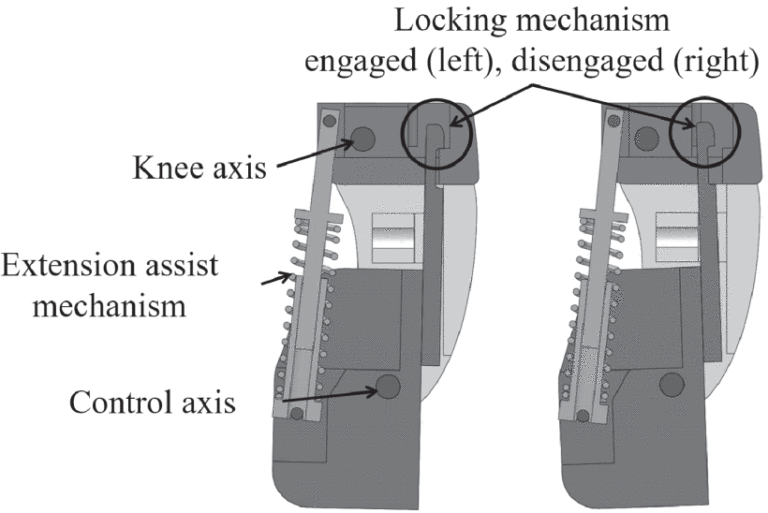
The 2-axes Automatic Stance Phase Lock (ASPL) stance control mechanism has been demonstrated to improve adult amputees’ mobility but has yet to be developed for the paediatric population. The overall objective for this work was to characterize the ASPL control mechanism with biomechanical modelling and design a 2-axes ASPL prosthetic knee joint suitable for children between the ages of 6 and 12 years. Paediatric anthropometric data and ASPL control mechanism performance characteristics established from adult ASPL knee users were utilized to develop paediatric-appropriate configurations of the ASPL stance control mechanism. Additional predefined design criteria were also included in the detailed knee design. Developed prototypes of the knee joint, Children-ASPL (CASPL) knee, were clinically validated using a single-subject cross-over study design, to assess control mechanism and overall knee functions. Faster walking speed, longer step and stride length with the CASPL knee suggest potential improvements in overall walking performance. The participant also felt confident walking with the CASPL knee and perceived the locking mechanism to be stable. Stemming from the findings here, future design revisions are aimed to improve the performance of the current prototype, including reliability of knee lock disengagement and performance of the swing phase control mechanism.

